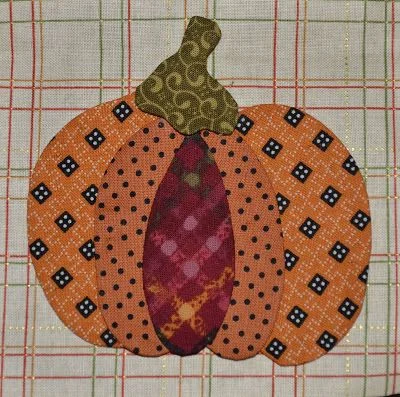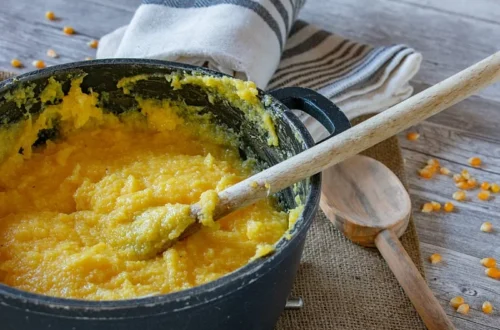Pumpkin patchwork is more than just a cute fall motif. It combines tradition, crafting skill, seasonal aesthetics, and creative expression. For quilters, DIY decorators, and autumn lovers, pumpkin patchwork offers a warm, charming way to celebrate harvest time, Halloween, Thanksgiving, and cozy home décor. This guide will help you understand what pumpkin patchwork is, how to design your own, materials & techniques, creative applications, tips and pitfalls, and why it remains so beloved.
What Is Pumpkin Patchwork?
Pumpkin patchwork refers to the craft of creating pumpkin-shaped or pumpkin-themed designs using the patchwork technique — that is, piecing together different fabric scraps, shapes, and colors to form the image or shape of a pumpkin or pumpkin motif.
Patchwork basics involve sewing together pieces (blocks, strips, patches) of fabric, often with different prints, textures, or colors. The pumpkin shape can be stylized (round, segmented) or more realistic.
The designs often use quilting approaches: block arrangement, appliqué, combining solids and prints, or even assembled panels.
Pumpkin patchwork may be used for home décor (throw pillows, wall hangings, table runners), seasonal crafts (plush pumpkins, decorations), or everyday accessories like aprons, tote bags, or clothing accents.
This practice is deeply rooted in quilting and folk art traditions, where resourcefulness (using fabric scraps) meets aesthetic design. Its popularity increases each fall, as people seek a cozy, handmade feel in their homes.
Designing Pumpkin Patchwork: Color, Shape & Pattern
Creating an appealing pumpkin patchwork design involves thoughtful choices around color palettes, pumpkin shapes, and pattern balance. Here are the main design considerations:
Color Palette
- Traditional autumnal tones—orange(s), rust, gold, browns, and muted greens—give warmth.
- For contrast, add fabrics with cream, beige, deep teal, burgundy, or muted gray.
- Mixing prints: small ditsy florals or subtle checks work well with solids. But watch for too many busy prints that distract.
Shape & Segmentation
Realistic pumpkin shapes are segmented (like grooves on a pumpkin). In patchwork, you replicate this by dividing the pumpkin block into curved wedges or vertical panels. Appliqué pumpkins include layering a pumpkin silhouette over a background. Patchwork pumpkins may have pieces arranged into the silhouette, or patchwork background with pumpkin appliqué.
Balance & Symmetry
Having symmetry (or near symmetry) in the pumpkin shape and in color distribution helps design look cohesive. For example, balancing dark and light patches on both sides. Use focal points: maybe one piece of fabric that is busier or more eye-catching placed centrally or near pumpkin’s center.
Quilting & Texture
- Adding quilting lines that follow pumpkin segments (vertical/groove lines) gives texture.
- Consider using batting that gives puff or dimension if making 3D decorations.
Backing and Border
- Background fabric helps pumpkin block stand out—solid or lightly printed fabric that doesn’t compete with pumpkin design.
- Borders or sashing between pumpkin blocks in a quilt can frame them nicely, often using coordinating-style fabric to tie the design together.
Techniques & Materials for Pumpkin Patchwork
Turning a design concept into a finished piece needs correct materials and techniques. Here are tools and techniques that help:
Materials
- Cotton quilting fabrics (100%) are standard—durable, washable, easy to work with.
- Batting for quilts or plush pumpkins—choose thickness based on desired loft.
- Appliqué supplies: fusible web, heat-n-bond, or raw-edge vs turned-edge appliqué tools.
Techniques
- Piecing & Patchwork Blocks – Cutting patches using templates or rulers; sewing patches together with precise seam allowances (usually ¼-inch for quilting).
- Curved Piecing – If pumpkin is divided into curved segments, using techniques for sewing curves (e.g. clipping, easing seams).
- Appliqué – For creating pumpkin shape on a background, either by fusible appliqué, raw edge, or turned-edge method.
- Quilting – Once tops are assembled, quilting patterns (stitching) can follow pumpkin shape lines, or create background texture.
Tools
- Rotary cutter, mat, fabric scissors
- Quilting ruler, templates (pumpkin templates, curved piece templates)
- Sewing machine with good feed dogs, pins or clips for curved seams
- Iron & pressing tools (seam pressing matters for patchwork accuracy)
Creative Applications & Projects
Pumpkin patchwork isn’t just for large quilts. There are many creative ways to use the motif. Here are inspirational project types:
Decorative Pillows & Cushions — Pumpkin blocks sewn into pillow fronts, appliqué pumpkins on pillowcases. Seasonal throw-pillows are classic.
Wall Hangings & Quilts — Create full quilts with multiple pumpkin blocks, or a wall-hanging featuring one large pumpkin. Great for autumn displays.
Table Runners, Placemats & Coasters — Small patchwork pumpkins can become centrepiece motifs or coasters. Etsy, for example, has many patchwork pumpkin designs for home décor.
Fabric Pumpkins & Soft Sculptures — 3D stuffed pumpkins made from patchwork panels; could be used on mantels or as autumn centrepieces.
Clothing & Accessories — Bag appliqués, patches on jackets or cloth items; pocket patches; seasonal scarves or decorative patches.
Digital Art / Graphic Designs — Patterns of patchwork pumpkins in prints, SVGs, digital embroidery, fabric print designs. The aesthetic of patchwork is very popular in cottagecore/fall decor graphics.
Tips, Mistakes to Avoid & Best Practices
Even experienced crafters can fall into common pitfalls. To make your pumpkin patchwork projects turn out beautifully, here are key tips and what to watch out for:
- Cutting Accuracy: Unevenly cut patches especially for curves will distort pumpkin shape. Always measure and use templates; clip seams for curved pieces.
- Fabric Matching / Scale: Using prints with too large motifs may get lost when cut into small patches. Match scale size to patch size.
- Color Overload: Too many contrasting prints can make the pumpkin look chaotic rather than charming. Sometimes simpler is more.
- Seam Allowance Consistency: A change of even 1/16 inch can throw off block alignment, especially when assembling multiple pieces.
- Pressing Seams: Press seams flat or open as needed; for curved patchwork, pressing helps pieces lie smooth.
- Prewash Fabrics: To avoid shrinkage or bleeding—especially in autumn tones (or red/orange fabrics) that might bleed.
- Test Blocks: Make a test pumpkin block first to check how your color combos, shape, quilting lines will look before committing to larger projects.
Why Pumpkin Patchwork Is So Popular & Lasting
Pumpkin patchwork holds a special place in the craft and home décor world. Here’s why it remains trendy and meaningful:
Seasonal Symbolism
Pumpkins are iconic symbols of autumn, harvest, Halloween, and Thanksgiving. Patchwork pumpkins evoke warm, nostalgic, comforting feelings.
Versatility
Whether in quilts, decorations, clothing, or digital art, pumpkin patchwork works across scales and uses. It suits rustic décor, modern farmhouse, cottagecore, and more stylings.
Accessible Craft
Many have fabric scraps, leftover quilt pieces—patchwork allows using small remnants that might otherwise go to waste. It’s an approachable craft for beginners and pros alike.
Trend in Aesthetic & Decor
“Cottagecore”, farmhouse design, rustic and handmade aesthetics have driven demand for patchwork and handmade items. Pumpkin patchwork fits perfectly into those categories.
Community & DIY Culture
Quilting groups, craft bloggers, and social media share pumpkin patch patterns, tutorials, and seasonal projects. That sharing reinforces popularity.
Emotional & Handmade Value
Handmade patchwork items carry sentimental value—each piece involves time, design choice, love. Gifts, decorations, heirlooms gain more meaning.
Conclusion
Pumpkin patchwork is more than just a craft—it’s a celebration of color, texture, tradition, and seasonal warmth. Whether you’re making your first little pumpkin appliqué or designing a full autumn quilt, knowing your design principles, material quality, and techniques can take your work from good to beautiful.
As you embark on your pumpkin patchwork projects:
- Start with a clear color palette & shape design
- Use the right materials & precision techniques
- Choose project types that fit your time & interest
- Avoid common mistakes by planning, testing, and pressing well
With patience and creativity, anyone can produce striking pumpkin patchwork pieces that bring comfort and joy each fall. Happy stitching!





